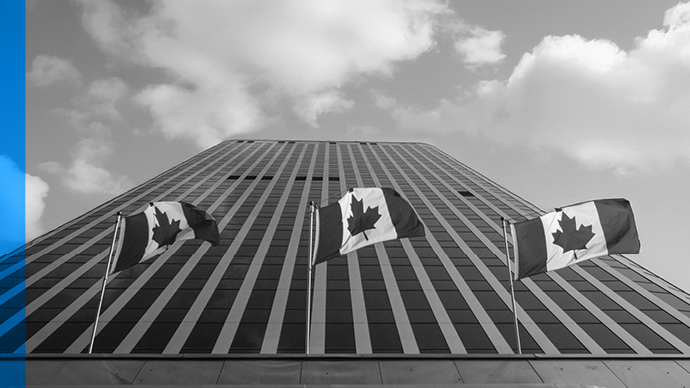John Bai believes we can thrive by being bold, even as tariffs reshape the global landscape.
Summary:
With U.S. tariffs reshaping the global trade and economic landscape, many portfolio managers, financial advisors, and investors are focused on finding the least damaging way to react to the barrage of policy changes. John Bai, Chief Investment Officer and Senior Vice-President with NEI Investments, has taken a different approach, moving beyond reacting to anticipating long-term opportunities for Canada and Canadian investors.
“Why waste this global crisis?” he asks. “Let’s focus not on what the U.S. can do for Canada, but what we can do for ourselves.”
Bai points out that Canada was not thriving in the pre-tariff environment. In fact, Canada consistently lags its G7 peers in productivity and GDP per capita, with a stock market that has historically underperformed the U.S. by a wide margin. That, despite the fact Canada has the most educated workforce in the G7, with abundant resources, energy, and critical minerals — and a stable political environment.
Now, in the context of a post-tariff shake-up, there may be more willingness to listen to fresh ideas, and Bai sees the potential for policies that play to Canada’s strengths and provide long-term benefits to the country and Canadian investors.
“Productivity growth leads to wage growth. Wage growth leads to better earnings. Better earnings lead to more prosperity,” says Bai. “And that happens on the stock market as well: the higher the productivity of Canadian companies, the higher the earnings growth of Canadian companies, and the higher the stock price appreciation of Canadian companies.”
Bai believes policies aimed at enhancing productivity can significantly impact Canada's economic trajectory. Canada is aiming to remove interprovincial trade barriers by July 1, and Canadian government research suggests this would add $200 billion to our economy — a number that exceeds the projected impact of the U.S. tariff drags.
Three pressures may be motivating U.S. policy
At the same time, the U.S. is facing at least three enormous challenges that may be playing into its policy decisions, Bai explains.
First, U.S. public debt has reached a critical level, exceeding 100 percent of GDP, at about US$36 trillion. Comparable debt levels in Portugal, Greece, and Italy during the global financial crisis resulted in painful austerity measures. While the U.S. has the protection of serving as the global currency reserve — which gives the country access to capital markets — its public debt is, without question, high.
Second, U.S. budget deficits exceed those of any other G7 country, at about 7 percent of GDP. Between October 2024 and March 2025, the deficit reached US$1.3 trillion. All that red ink means the U.S. is growing its public debt at a rate of US$1 trillion approximately every 100 days — an unsustainable pace.
Third, interest payments on U.S. public debt are over US$1 trillion a year. That exceeds military spending — and, over the past few centuries, interest payments higher than military spending signalled the downfall of several nations, including Spain, France, and the U.K.
“The U.S. faces huge challenges,” says Bai. “But we shouldn’t focus on what they’re doing. Instead, we should focus on what we can do.”
Finding new paths to performance while managing risk
Bai is optimistic about the opportunities available to investors as interprovincial trade barriers ease and Canadian companies pursue their ambitions nationally and globally. He envisions strategic investments to position Canada as a leader in areas such as STEM research, AI, and engineering.
“A lot of these trends are going to take a while before they start to hit investors, but we’re focused on helping advisors capitalize on the shifting markets and a changing world.”
For instance, at the beginning of the year, the NEI team anticipated a more volatile market environment in 2025. In their annual strategic asset allocation re-optimization, they increased allocations to lower-volatility equity strategies, alternative investments such as a long-short strategy, and higher-income securities. This is just one example of what the team focuses on as they look beyond current market conditions for unseen opportunities and trends.
Looking ahead, Bai recommends that investors avoid over-allocating to the U.S. and seek better valuations with similar growth rates elsewhere. Increasingly, that opportunity can come from Canadian companies.
Learn more by visiting the NEI website or speak to your NEI wholesaler today.




